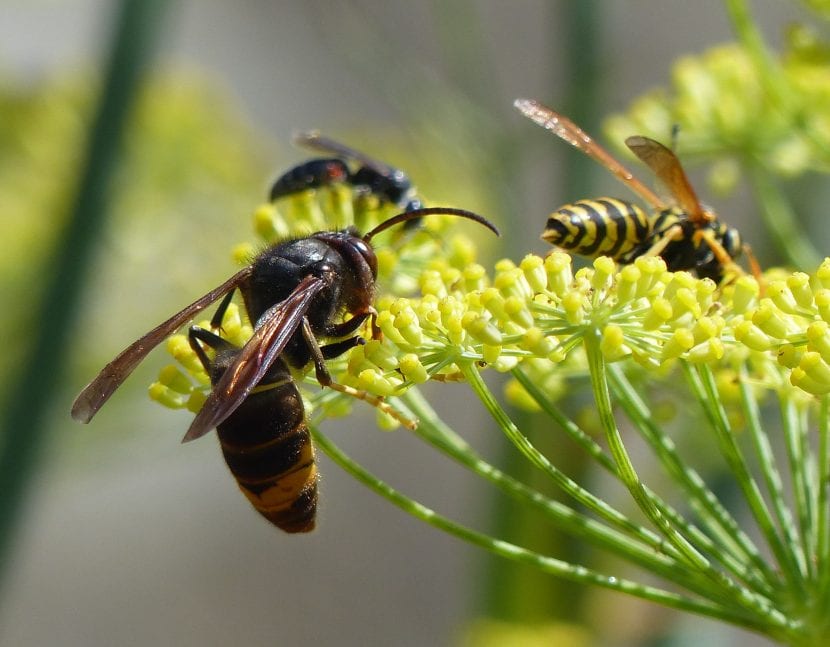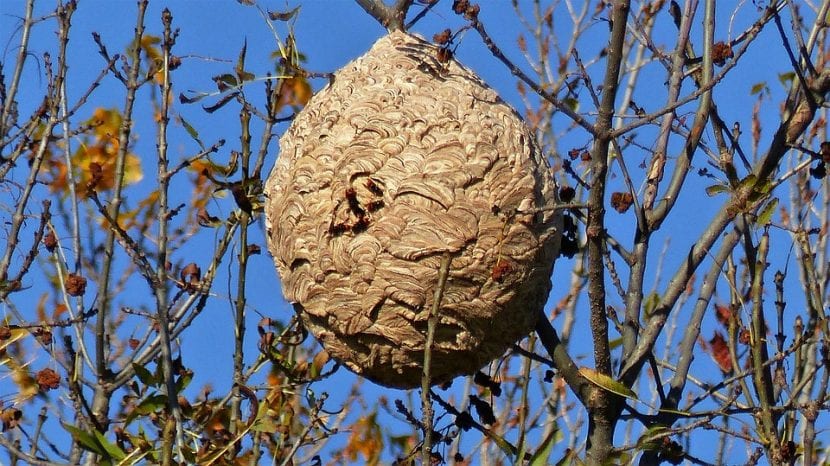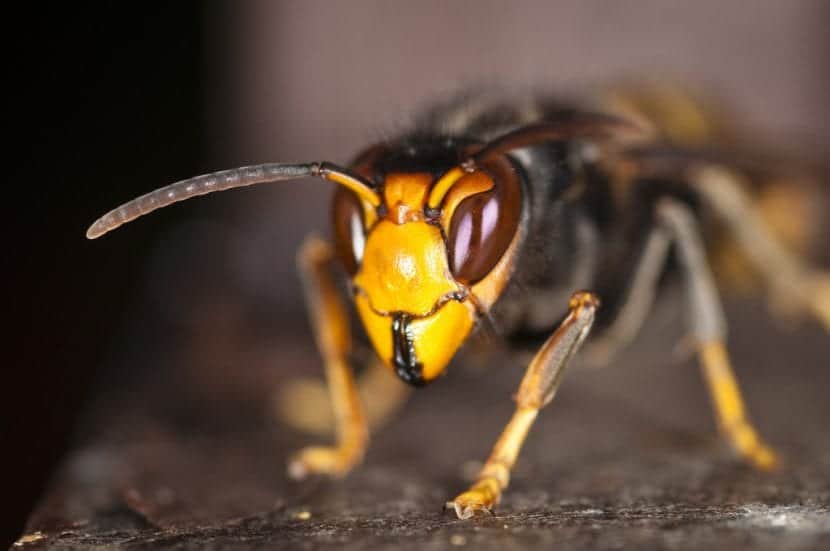
Image – Wikimedia/Tsaag Valren
Can you imagine being enjoying your garden or patio full of plants and suddenly seeing an Asian wasp pass very close to you? Of course, that is one of the moments that no one would like to live.
It is considered one of the most aggressive wasp species, and since it is also one of the largest, the fear of being a victim of one of them can be intense. But, Is that fear founded, or can you really live with it well?
What are the characteristics of the Asian hornet?

It is a species of wasp whose scientific name is Vespa velutina. Originally from Southeast Asia, it is characterized by having a large size; in fact, the queen can measure about 3,5cm, and the workers and males not more than 3cm. It has a black thorax and abdomen, except for the fourth segment which is yellow. The legs are brown with yellow ends, and the wings are a dark yellowish color.
It is diurnal, and it feeds on other insects such as ants, butterflies, aphids and above all on bees, but not on other wasps.
What is the nest like?
The nest has a rounded shape, and is constructed of chewed wood fibers. It can reach 80cm in diameter and a meter in height, although it is not easy to see it since it is usually built on top of trees more than 15 meters above the ground.
Is the Asian hornet dangerous to humans?
Well this is like everything: if you don't bother her she won't do anything to you. And by do not disturb I mean do not make sudden movements when you are around, or manipulate the nest. But if you do get stung, you will feel as if a large needle is penetrating your skin, which of course will hurt and redden. Now, these discomforts will pass as the days go by, especially if you apply any cream.
But Can this insect kill a human being? Yes, but only if this person receives multiple stings, a single mucosal sting or if he is allergic to the poison.
La Vespa velutina .

Image - Flickr / Danel Solabarrieta
In Spain it is considered an invasive species, according to Law 42/2007 of December 13. Its colonizing potential poses a serious danger to native species, especially for bees like Apis mellifera iberica. Today it is found in practically the entire north of the Iberian Peninsula, and in parts of Mallorca.
If you see a nest or an Asian wasp, you should contact the entity that protects the species in your community.
And calm down! That nerves are not good at all.